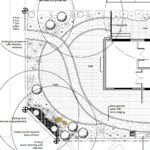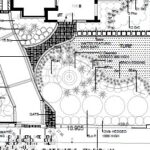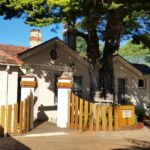Designing gardens for heritage buildings
When designing gardens for buildings that are heritage listed, how does one start?
First of all inquiring into the period is necessary to establish the context of history and culture.
How do races, people form attachments to a landscape; the values and meanings attributed to places.
‘Aboriginal people ‘possess’ their local landscape by imprinting them with their life stories, histories, memories and emotions’https://www.environment.nsw.gov.au/chresearch/ResearchThemeCulturalLandscapes
Historic landscapes provide evidence of social and cultural change and allow us to learn about the procedures and practices of plant cultivation and how they evolved.
Context of the place
Gardens and the landscape could be of importance in their own right and or as the associated setting for a historic building.
Research into the prevalent styles is a good place to start.
Some historic buildings have bushland with surviving remnant species.
A lot of work has been done in the areas of bush conservation and regeneration and the techniques used there can well be employed.
Photographic or descriptive records of the property are invaluable in providing with information on the style of the garden, what plants were planted, what surface treatment was used.
Views and vistas- many a time growth of plants, the maintenance regime or change of ownership of the property changes the views and vista that originally existed.
Careful and planned remedial works can help reinstate the gardens to the original intent.
Preserving the design rules

 Sometimes, the plants within the garden beds are all later plantings, superimposing the original plant palette. In such situations, it is possible to keep the layout formed by the garden beds or paths and replant with a plant palette sympathetic to the building.
Sometimes, the plants within the garden beds are all later plantings, superimposing the original plant palette. In such situations, it is possible to keep the layout formed by the garden beds or paths and replant with a plant palette sympathetic to the building.
We recently had an opportunity to work on a garden for a post war house.
The original building has seen a few alterations and a new annexe has been designed.
We kept the old sandstone boundary wall with it’s letterbox and invoked a series of paths that we deduced would have existed in relation to the entry points and the street.
There were 4 magnificent Angophora costata in the front garden so we proposed plants in the garden beds that would work with the trees.
Authenticity of materiality

 Data collected from research on the style and methods of construction, the prevalent materials used can be used to inform the details of the garden.
Data collected from research on the style and methods of construction, the prevalent materials used can be used to inform the details of the garden.
This project had us use brick with rounded edges to from the path edges.
The infills can be paving, gravel or decogranite.
To keep the sanctity of the various outlines, a lot can be done with a light hand. For example to maintain the spade edge to lawns, thin metal edging can be used to ease the maintenance regime.
Maintenance:
Approach:
When considering supplementing the planting or replacing them, the guiding principle should be one of choosing plants from the range of species that were there originally.
In the event this proves difficult or if one wants to deviate slightly, plants ought to be chosen that are similar in form and function as originally planned.
Trees and shrubs need regular maintenance regime to keep them in the best of vigour.
Under general exemption, tree can be pruned to 20% of the crown in a span of two years. Any more, needs to be assessed by a qualified professional and pruning needs to be carried out to AS 4373 Pruning and Amenity of Trees.



